
Etchmiadzin Cathedral reopens in Armenia
The main church of Armenia, the Etchmiadzin Cathedral, was closed to worshippers and tourists for six years, as it was undergoing restorations. The comprehensive restoration works of the 1,700-year-old structure were completed this autumn. The cathedral opened its doors a month ago, and since then, a steady stream of locals and tourists has visited it daily. On Saturdays and Sundays, many end up listening to the liturgy outside the cathedral walls, as entry is not always possible.
This church is, of course, revered by all believers, but it holds special significance for the residents of Etchmiadzin, as the city’s main symbol has finally been returned to them.
The restorers claim that the work done there is unique in terms of its complexity, scale, and quality of execution. They are confident that they have “given the ancient church life for centuries to come.”
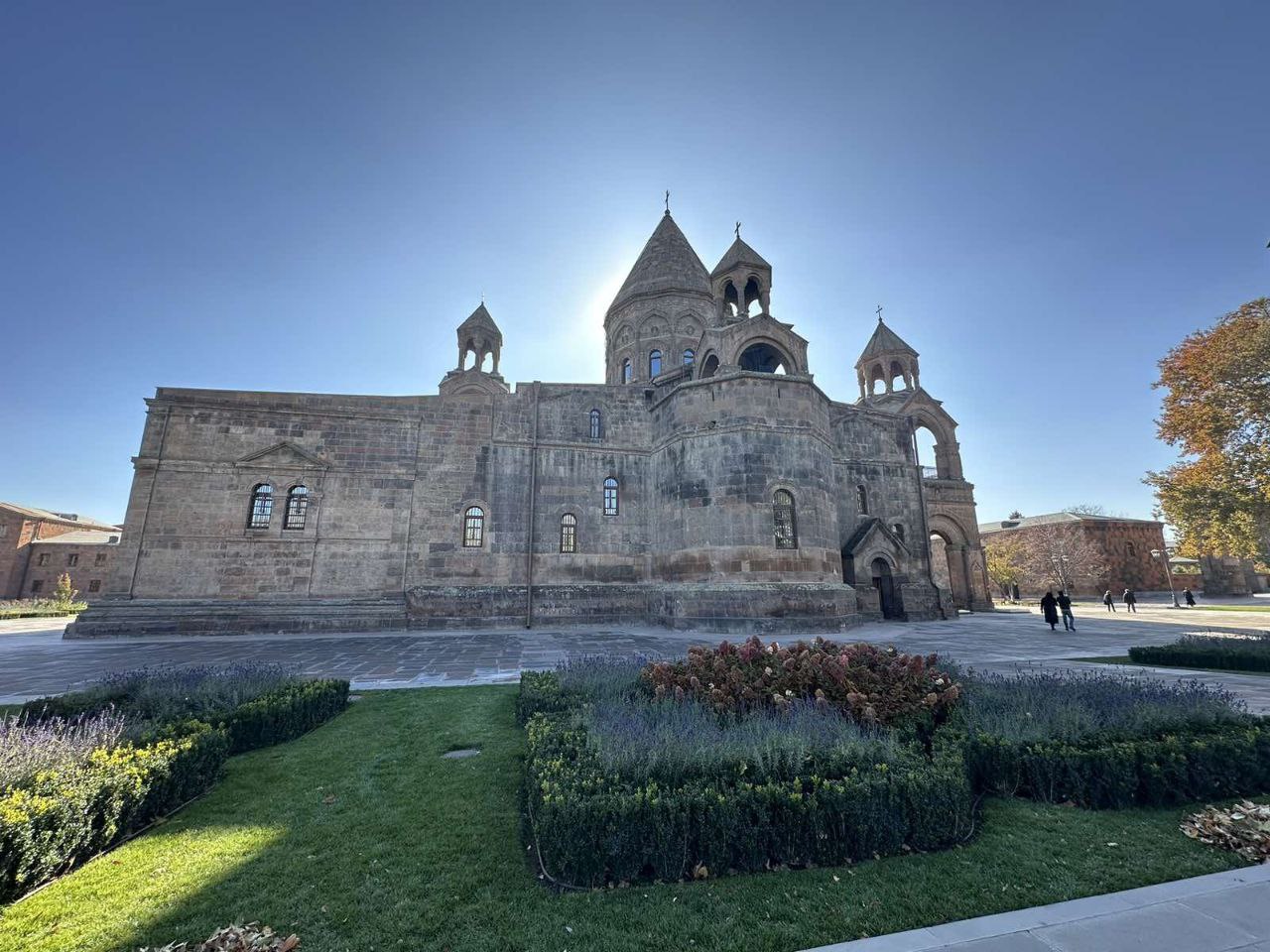
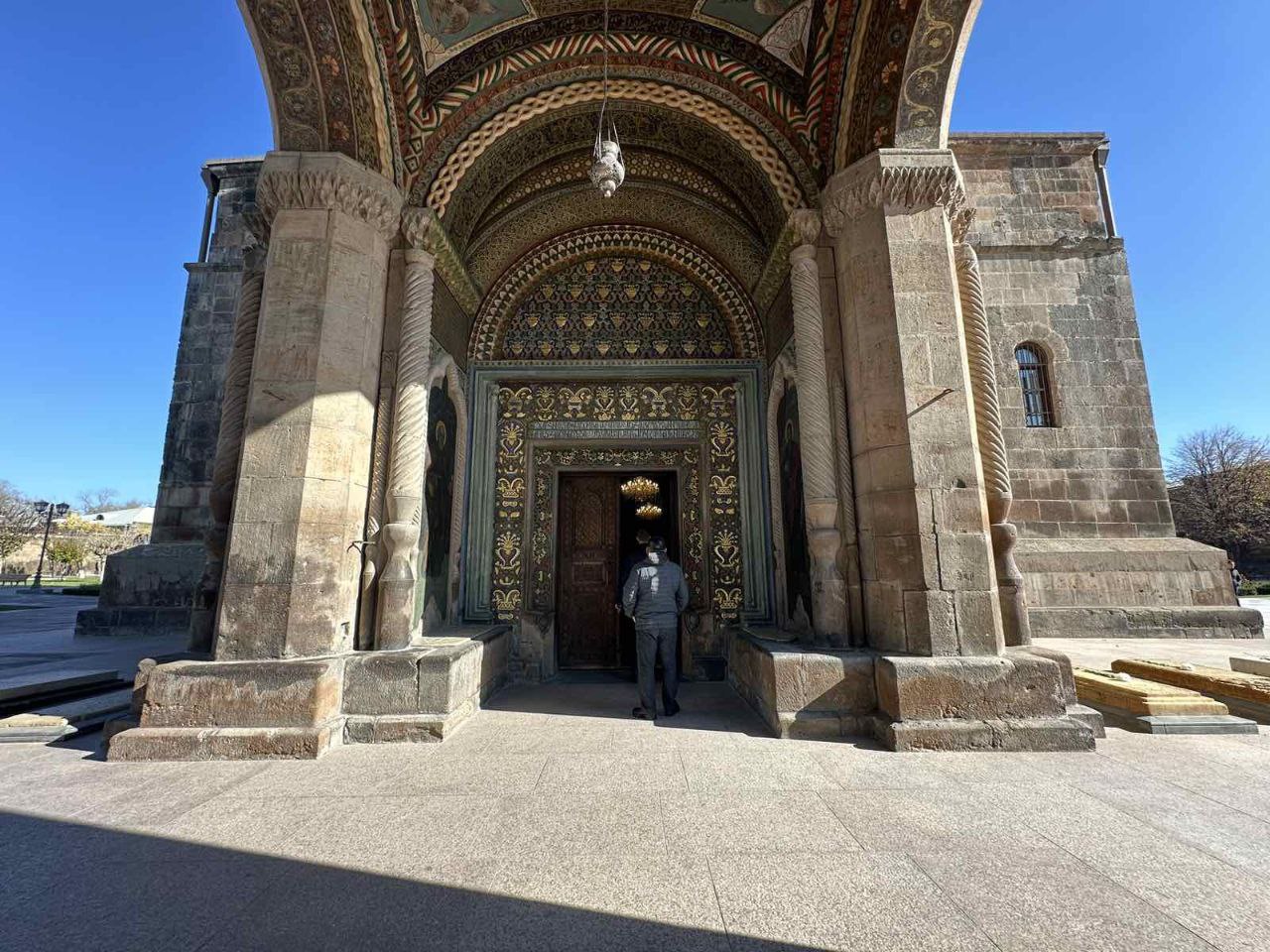

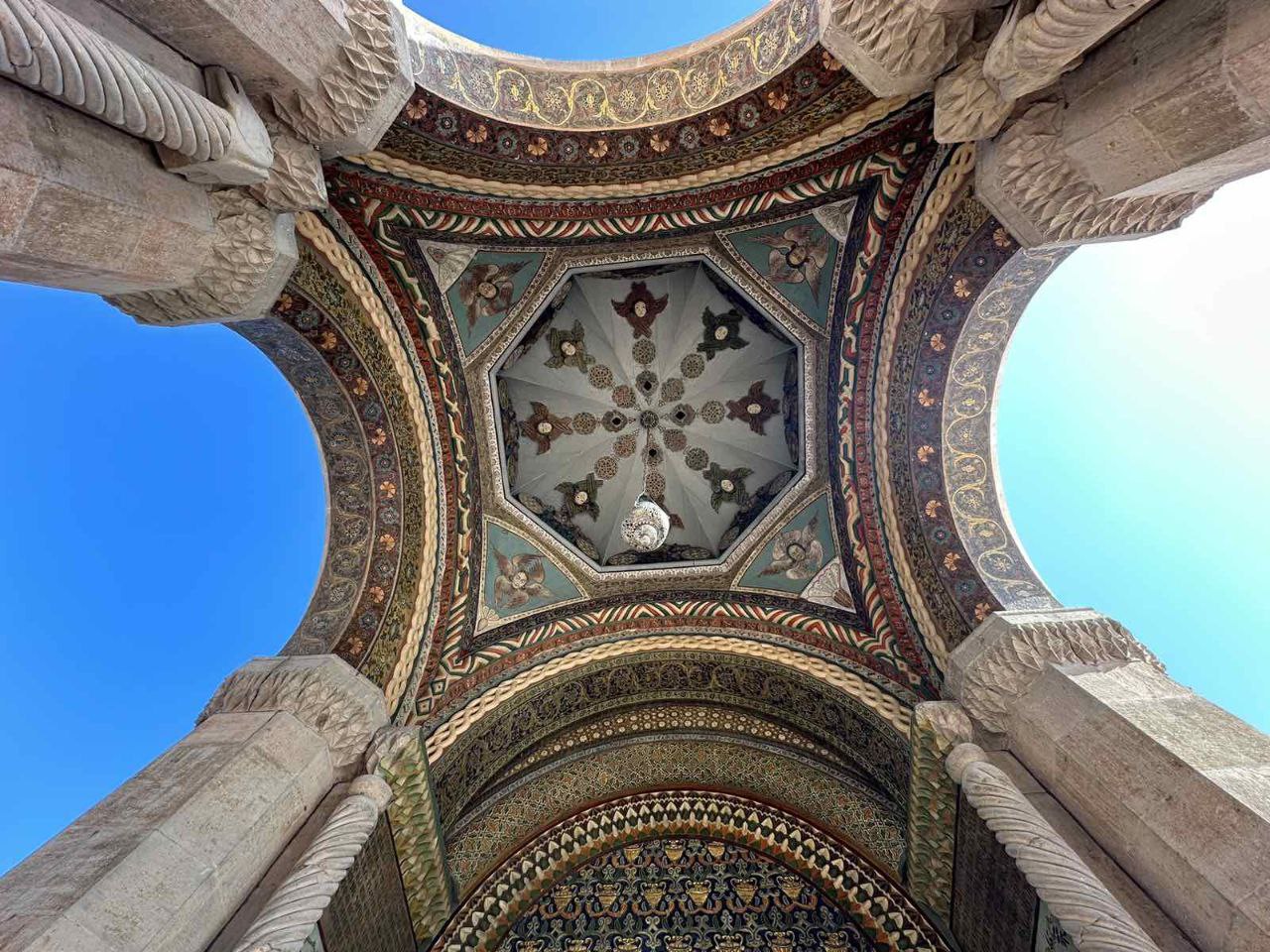

- “Not a religion, but a way of life” – how the Armenian Apostolic Church became exceptional
- Praying alone: Easter in Echmiadzin, the spiritual capital of Armenia
- Clerical uprising or political interference in the country: what is happening in Yerevan? Opinions
“The city is breathing again”
“There are many beautiful churches in Etchmiadzin, but when the restored cathedral opened, it was as if a new wave of faith surged.
People had been waiting for this for years. On opening day, many kissed the cathedral walls and prayed on their knees.
The city is breathing again.
When the sounds of the church service fill the apartment, there’s a unique energy. They evoke cosmic, fantastic feelings in a believer. We missed this for six years. We waited. I think a stage of spiritual revival has come. It’s been a long time since we felt such warmth,” says Armen Mkrtchyan, who lives next to the cathedral.
The Etchmiadzin Cathedral is considered one of the oldest Christian churches in the world. It was built in the early 4th century (301-303 AD) when Armenia officially adopted Christianity as its state religion. In 2000, the cathedral was included in the UNESCO World Heritage list.
The church was partially restored at various times but had never before been closed for full-scale restoration.
This initiative was led by Catholicos of All Armenians, Garegin II. Research and design work began in 2012, and reinforcement of the church structure commenced in 2016. By 2018, it reached a stage where closing the cathedral became necessary. Only this September was it re-consecrated and reopened.
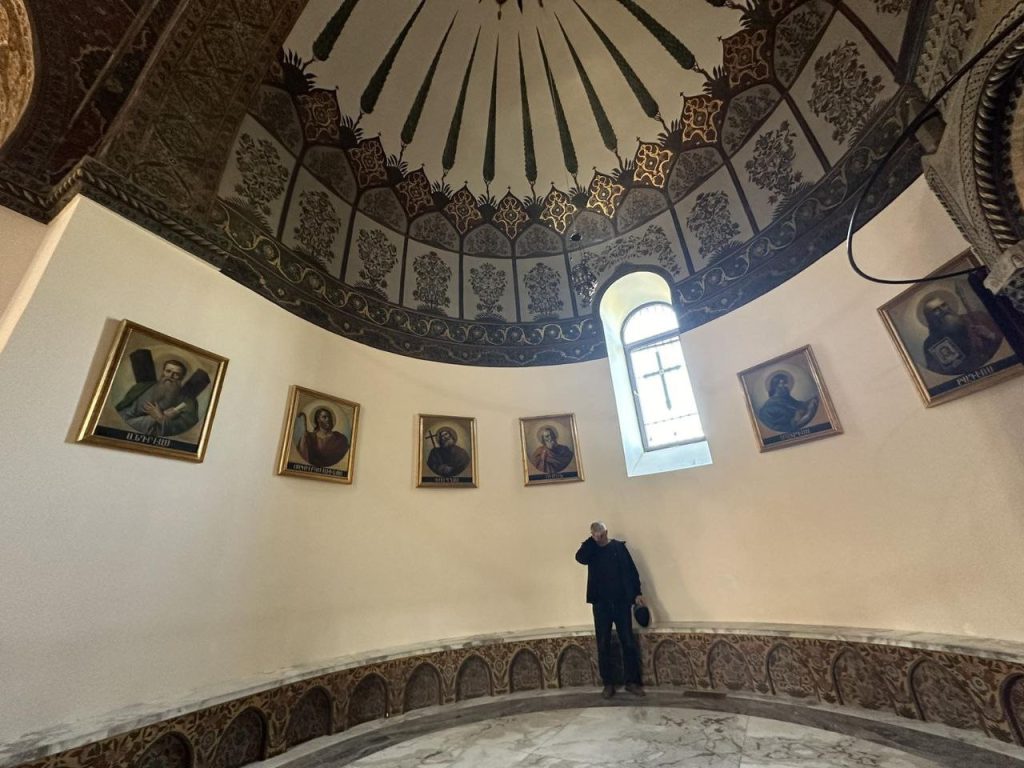
Enamel artist Ani Manukyan, a resident of Etchmiadzin, describes how emotional the reopening was for her family:
“We entered the church with the same feelings one gets when meeting a loved one after a long separation. When I crossed the threshold after such a long wait, I couldn’t contain my emotions.
Our city feels alive again, filled with people. It’s very crowded. Even the traffic in Etchmiadzin is proof of this. And I am also happy about something else—I thought our faith had weakened, but I see the crowds coming to the cathedral. In the evening services, it’s impossible to get inside. People pray on their knees outside, at the walls of the church.”


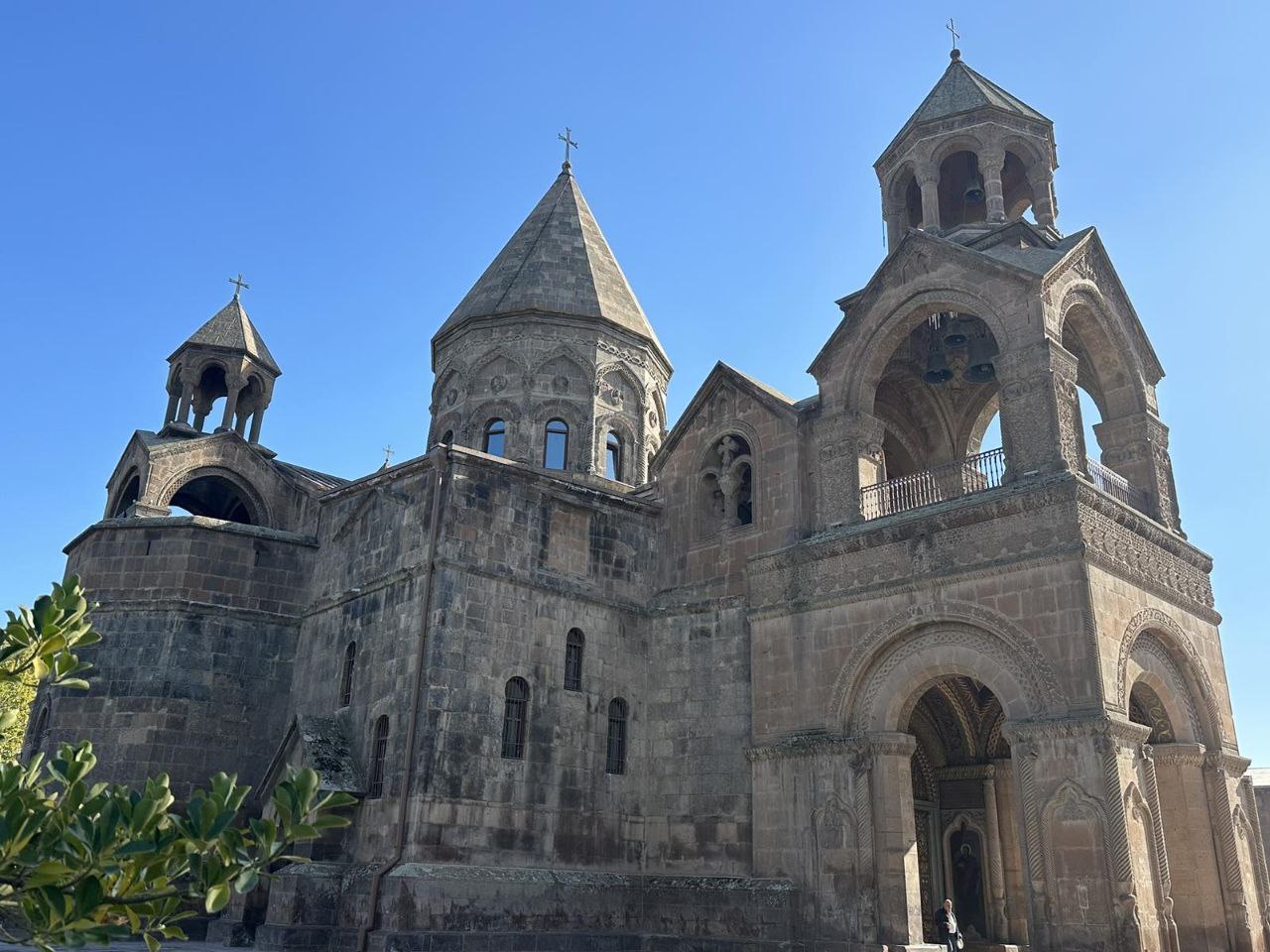
Surprising discoveries
During the restoration work, the entire team encountered several surprising discoveries. The chief architect of the cathedral restoration project, Amiran Badishyan, explains:
“When we removed the dome of the bell tower and the roof of the Holy Archangels chapel for reinforcement, we discovered karases [clay vessels]. However, previous restoration documents contained no mention of them. This was an unprecedented find: 170 vessels, six of which are very tall—1.2 meters in height. It turned into a very interesting collection. All the finds date back to the 17th century. We also discovered various ceramic household items, from clay teapots to jugs. Additionally, while reinforcing the walls, we found four early Christian capitals that had been damaged and concealed under plaster.”
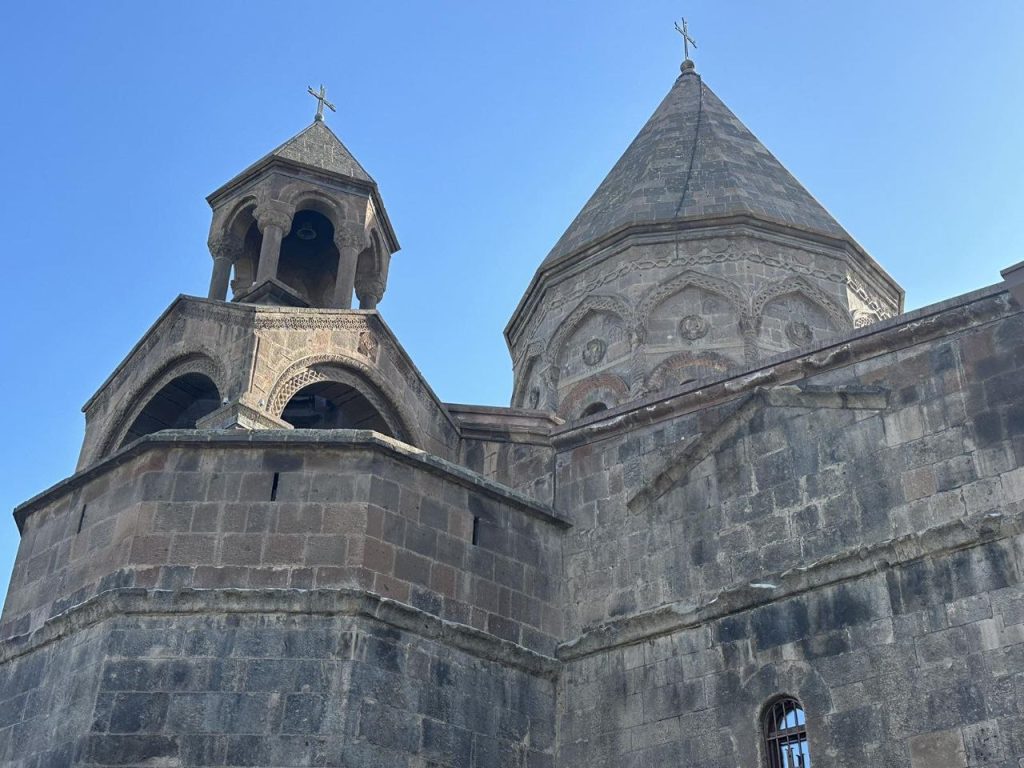
Bishop Musheg Babayan notes that the comprehensive restoration started with the cathedral’s foundation and ended with the cross on the dome:
“Thanks to our craftsmen, one can now admire the beauty that was hidden under years of accumulated soot. To recover the beauty of this magnificent cathedral, with more than 1,700 years of history, some frescoes were restored by specialists lying on the floor, others while working on scaffolding.”
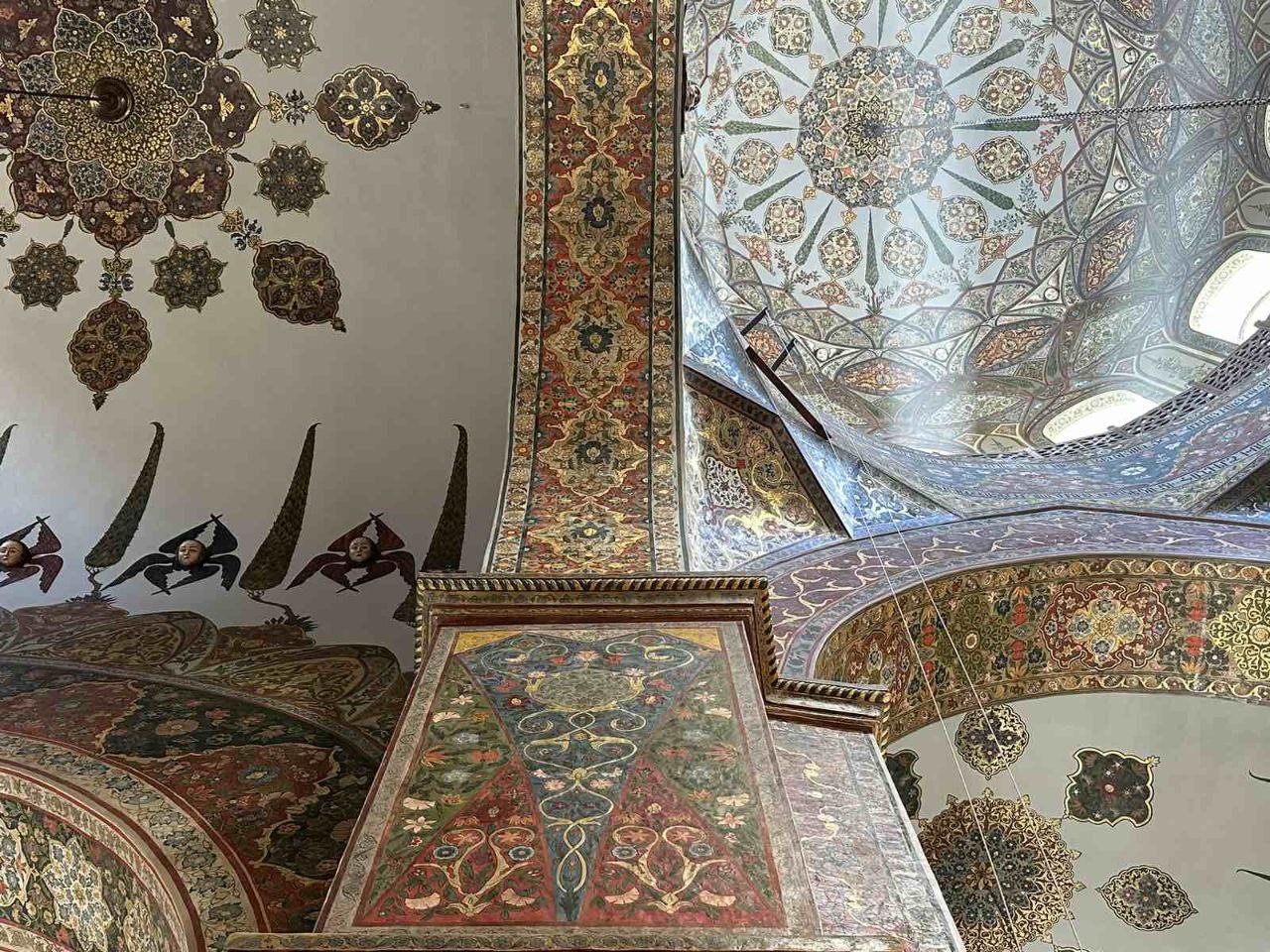

When specialists from the Research Center for Fresco Restoration dismantled them to assess the structure’s stability, they found second and third layers of frescoes dating back to the 17th century.
The fresco restoration project was led by Arjanik Hovhannisyan. We spoke with him after the cathedral’s reopening [just a few days before this article’s publication, he passed away].
“We faced two main tasks: separating the frescoes from the walls and restoring them. When we found fragments in the inner layers, it became clear that the cathedral was once filled with compositions. In the dome alone, there were 24 compositions. At one time, the walls were covered with images from the Old and New Testaments,” said Arjanik Hovhannisyan.
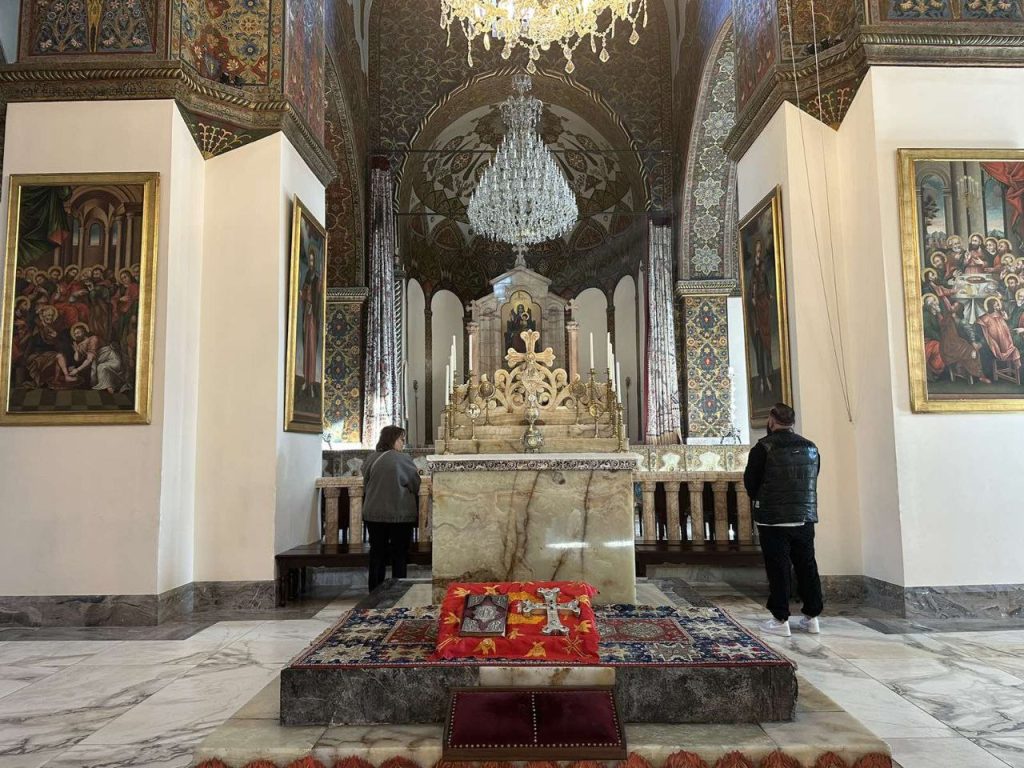
A team of 14 specialists participated in dismantling, restoring, and reinstalling frescoes over an area of 620 square meters.
“This is an unprecedented fresco restoration work in terms of its scale. We used a globally accepted method that even colleagues from other countries have struggled to implement. We trained in Italy, using Italian and Russian technologies. Around 60 square meters, or 123 fresco fragments, were archived. The total area of the cathedral’s frescoes is 2,400 square meters. Imagine, 620 square meters were dismantled and reinstalled. It’s a vast area,” explained the restoration project leader.
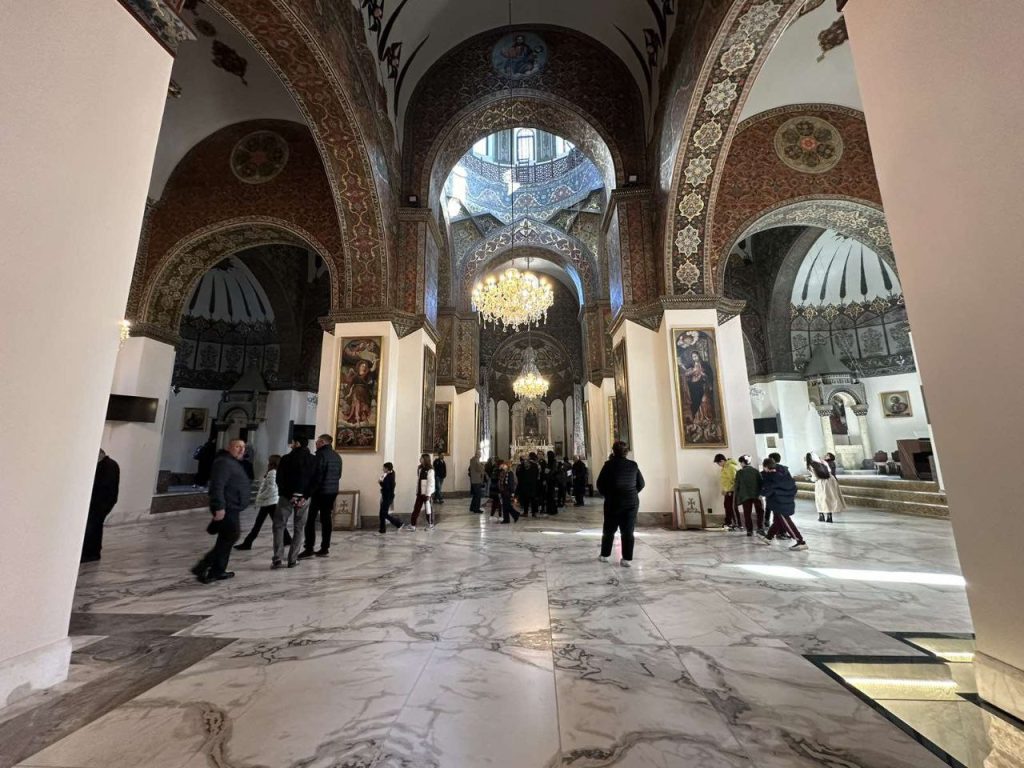
According to Hovhannisyan, the paintings from an earlier period discovered during dismantling could not be returned to their original locations, as this could disrupt the overall harmony:
“The earlier paintings will be displayed in a museum; there’s a project for this. When we dismantled the arches and columns, we found frescoes from the pre-Ovnatanian period. Four generations of artists from the Ovnatanyan family painted the cathedral over different centuries.”
In 1710, renowned artist Naghash Ovnatanyan was invited to Etchmiadzin to paint the cathedral. Later, in the first and second halves of the 18th century, his sons Hakob and Harutyun Ovnatanyan occasionally painted it. In the 19th century, the next generation of the family—Mkrtum and Hakob Ovnatanyan—contributed frescoes to the Etchmiadzin Cathedral.
Speaking about the restored frescoes, artist Ani Manukya assures that they have been returned to their original colors:
“Knowing the layers that were found, I believe the decision to restore the original colors was correct. We must preserve what we have.”
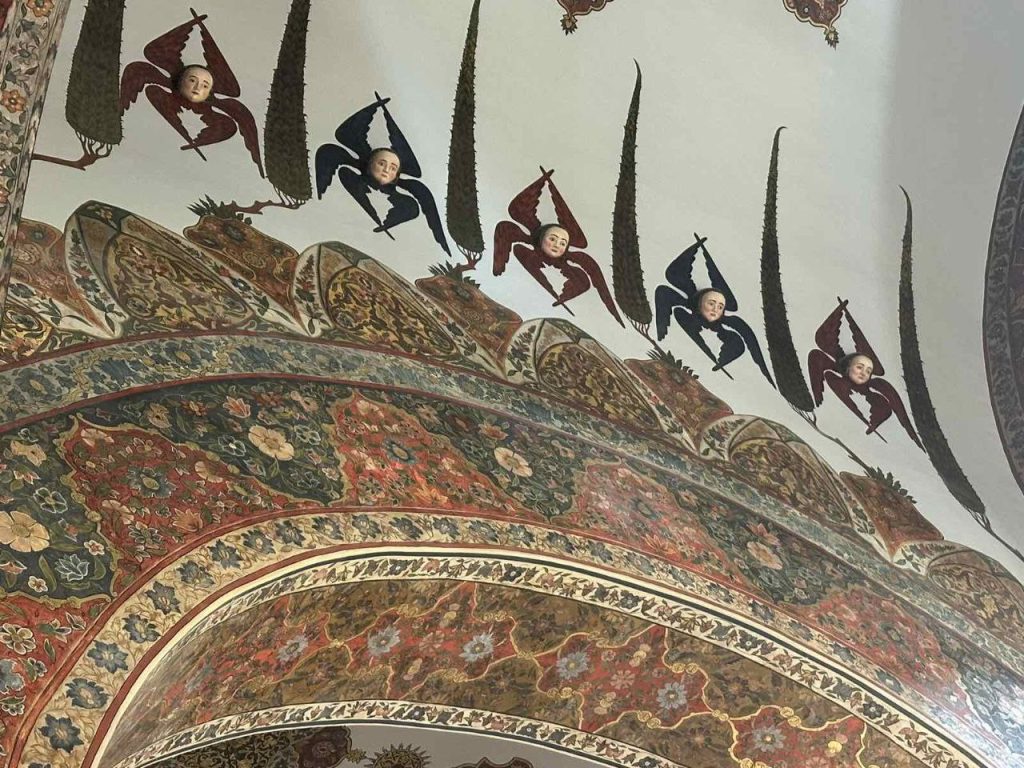
According to experts, many of the cathedral’s frescoes were eroded due to humidity and soluble salts. In the northern chapel, these lost fragments had to be recreated.
“On the fragment depicting the 12 apostles, specialists managed to remove all alterations and restore the original image based on historical materials. Only certified restoration materials from Italy were used during the reconstruction work. Several hundred tons of material were carefully injected into wall cavities. A skilled team of specialists—from engineers to architects and materials scientists—participated in the construction work,” explained Arjanik Hovhannisyan.
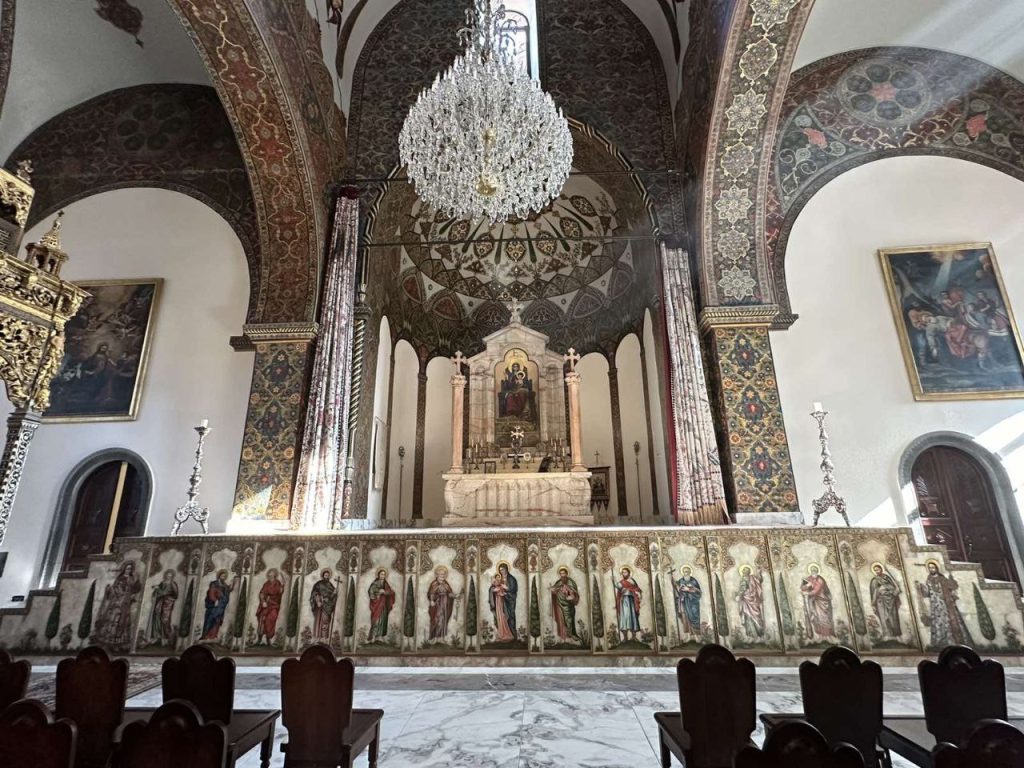
Architect Amiran Badishyan emphasizes that the restoration and reinforcement of the cathedral have now been fully completed:
“This is a remarkable achievement in Armenian restoration history. Such a comprehensive project is unprecedented and remains the first of its kind. Today, many people can stand by the cathedral, look at the restored building, remember its old appearance, and think: ‘For years, the cathedral was closed, and they seemed to be working, but nothing has changed.’ I believe that after such extensive construction work, the cathedral will not require restoration for at least 200 years.”
Speaking about the earthquake resistance of the restored structure, the chief architect reminds us that this is a cathedral that has been standing strong for 17 centuries:
“The cathedral has endured, surviving many destructive earthquakes. As long as it doesn’t encounter extraordinary conditions, it will stand for centuries—it has been restored to an exceptional standard. Originally, it was constructed from stone structures. Today’s standards require resistance to a magnitude nine quake. Modern seismic requirements aren’t met by this cathedral, nor by any medieval buildings. But the fact remains—the cathedral stands.”
After the restoration, the interior of the cathedral reveals its foundation.
“The foundation has been exposed. There’s something meaningful in the ‘transparency’ of the structure; you can see its foundation, as if seeing the depth of your faith. The foundation also has interesting ornaments. Our main church holds a unique power. I draw energy from it. There are places where people feel this energy. This is true for entire countries. And I believe this cathedral is the ‘generator’ of our country. It absorbs and gives life energy to this land,” says artist Ani Manukyan.
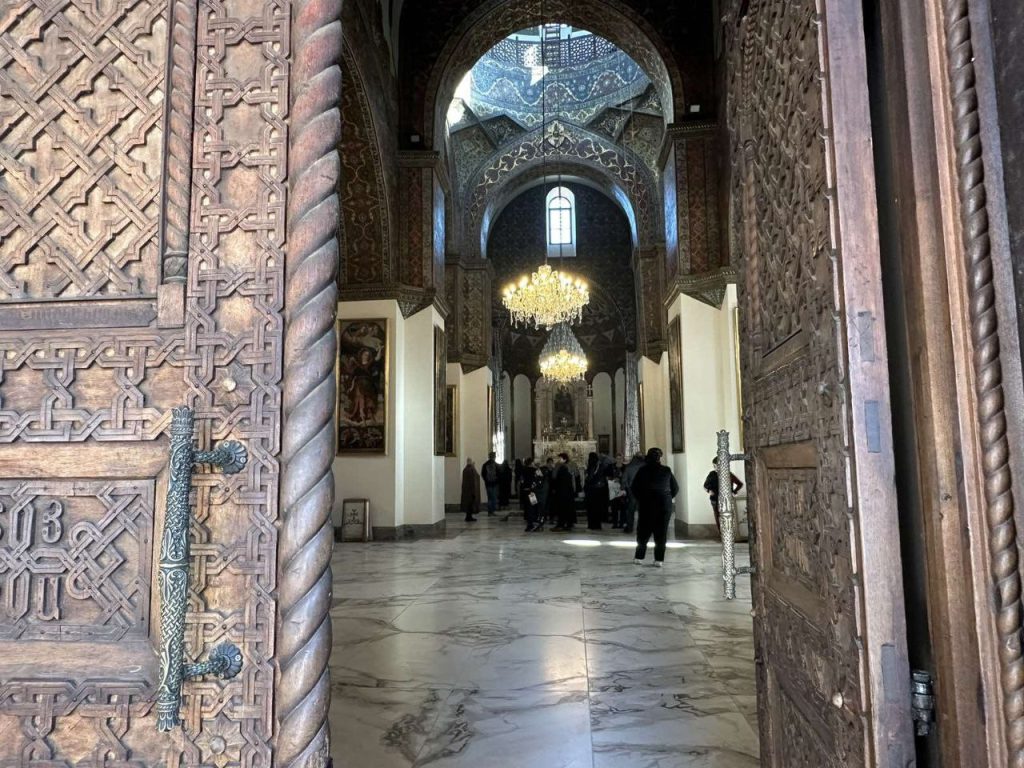
Follow us – Twitter | Facebook | Instagram
Etchmiadzin Cathedral reopens in Armenia
